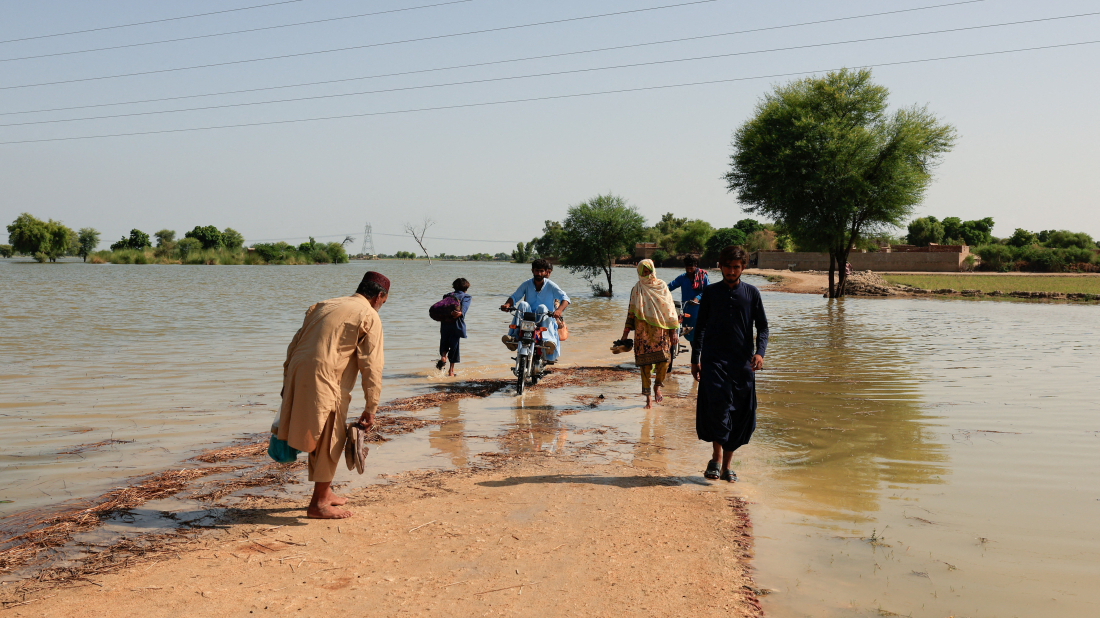Australian bushfires raze homes, cut power to tens of thousands
Thousands of firefighters worked tirelessly on Saturday in Victoria, Australia, to combat bushfires that have destroyed homes, left tens of thousands ...

Massive floods in Pakistan have struck both the rural heartland and industrial centres for the first time in decades, causing billions of dollars in damage.
The government had been optimistic about 2026, pencilling in 4.2% growth on the back of a rebound in farming and manufacturing after the economy was stabilised under a $7 billion International Monetary Fund bailout.
Instead, record monsoon rain since late June, amplified by dam releases from India, have submerged large swathes of Punjab and Sindh, the two most populous and economically vital provinces.
While waters have yet to recede in many districts, officials and analysts warn the hit could be deeper than in 2022, when a third of the country lay under water, due to dual shocks to agriculture and manufacturing.
In Punjab, Pakistan's rice, cotton and maize engine, 1.8 million acres of farmland have been inundated, according to the provincial disaster management agency.
"About 50% of rice, and 60% of cotton and maize crops have been damaged," said Khalid Bath, chairman of the Pakistan Farmers Association.
He estimates at least a tenth of the country's crops are destroyed, with vegetable losses topping 90% in some districts.
The timing is perilous: Pakistan is about to sow wheat, the crop that provides nearly half of the country's caloric intake.
National reserves remain comfortable after a strong 2024 harvest, according to Crop Monitor, but the sowing window is at risk in fields still slick with silt and mud.
"Food insecurity is coming, not just higher prices," Khan warned.
Snow and ice stalled travellers in northwest Europe on Wednesday, forcing around a thousand to spend the night in Amsterdam's Schiphol airport but delighting others who set out to explore a snow-blanketed Paris on sledges and skis.
U.S. President Donald Trump has warned that Iran could face a strong response from the United States if its authorities kill protesters amid ongoing unrest.
Iran is now facing a near‑total internet blackout as anti-government protests sweep the country. Major cities including Tehran have seen connectivity drop sharply, leaving millions of residents isolated from online communication.
New York City parents could soon have access to free childcare for two-year-old children following a joint announcement made by Mayor Zohran Mamdani and Governor Kathy Hochul on Thursday (8 January).
Tens of thousands of Iranians have taken to the streets in Tehran and across at least 28 cities in a wave of anti-government demonstrations, now entering their twelfth day.
President Donald Trump stated on Friday that the U.S. must acquire Greenland to prevent Russia or China from potentially occupying the island in the future.
Thousands of firefighters worked tirelessly on Saturday in Victoria, Australia, to combat bushfires that have destroyed homes, left tens of thousands without power, and scorched large areas of bushland.
A South Korean court hearing the case of former President Yoon Suk Yeol on charges of insurrection postponed the sentencing request until next week after a lengthy session. This case could potentially lead to a death penalty verdict for Yoon due to his failed attempt to impose martial law in 2024.
Türkiye is reportedly in discussions to join the defence alliance between Saudi Arabia and Pakistan, a strategic move that could reshape security dynamics in the Middle East and South Asia.
The United Nations has described footage of the fatal ICE shooting in Minneapolis as deeply disturbing, urging a thorough investigation and reaffirming the right to peaceful protest.
You can download the AnewZ application from Play Store and the App Store.

What is your opinion on this topic?
Leave the first comment